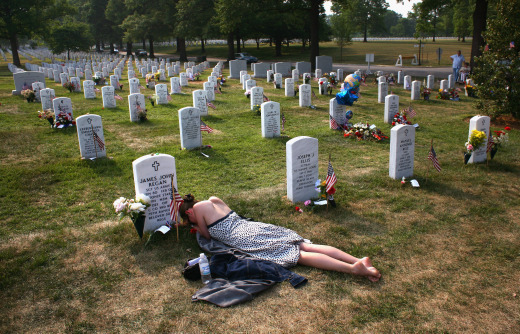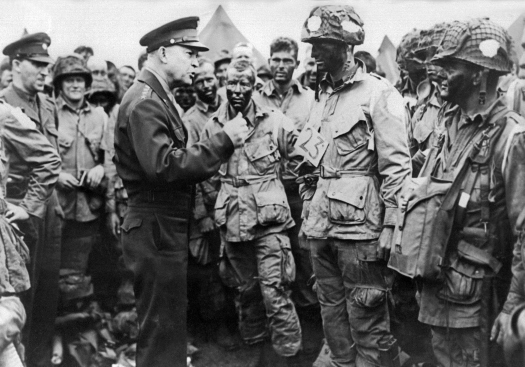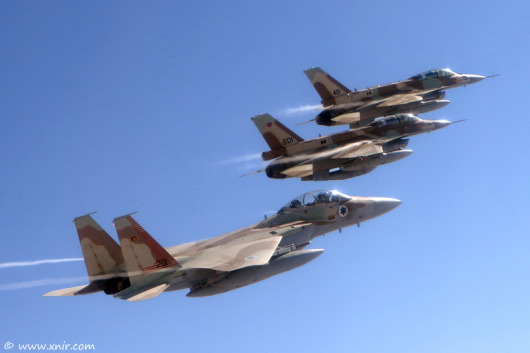Thomas E. Ricks's Blog, page 172
July 11, 2012
Sending youth to war

While Tom Ricks is away from his blog, he has selected a few of his
favorite posts to re-run. We will be posting a few every day until he returns.
This originally ran on December 1, 2009.
David Wood captures the heartbreak of sending to war young men who only
recently were boys:
I sometimes forget how young they are. A few years ago, I was lazing in the
dust with a bunch of Marines during a break in training. Already combat
veterans, they were about to deploy back to Iraq. They'd been practicing getting
ambushed and killing the ambushers, and now they were chatting about computer
games.
"Hey, did'ja ever get 'Gears of War'?" asked Louis Duran, 19.
"Nah, I was gonna," said his buddy, Steven Aspling, 20, "but my mom wouldn't
let me."
July 10, 2012
Lessons from a Syria wargame

By Nora Bensahel
Best Defense director of wargames
On June 27, I participated in a day-long crisis simulation about the regional effects of the conflict in Syria, which was co-sponsored by AEI, the Saban Center at the Brookings Institution, and the Institute for the Study of War. Although such simulations are necessarily artificial and simplified (the only teams in the simulation were the Saudi Arabia, Turkey, and the United States, for example), they nevertheless provide valuable insights about the issues involved and the national interests at stake. Four key themes emerged from the game.
1. The road to Damascus leads through Ankara. Turkey emerged as the most critical regional state. In each of the game’s three moves, the United States, and by extension NATO, chose to reflect Turkish preferences rather than take more initiative on its own. Unless Turkey actively supports more direct action in Syria, the United States and NATO will not do so -- and, unlike Libya, no NATO member states are going to push Turkey to support direct action. This suggests that more forceful efforts to remove Assad from power will only happen if and when Turkey decides that would be the best way to secure its own national interests.
2. Military force against Assad will only be a very last resort. Turkey only supported military action to remove Assad in the game’s last move, where the game designers made the situation so dire that Turkey essentially had no other alternatives. The U.S. team quickly rejected all military options in the earlier moves, and even in the last move, would have chosen to maintain the (terrible) status quo if the Turkish team had not decided to enter Syrian territory.
3. The Arab states don’t have a whole lot of diplomatic leverage over developments in Syria. The game was designed so that Saudi Arabia was the key Arab player, but as the Saudi team admitted during the debrief at the end of the day, it didn’t have a whole lot to do. The Saudi team did continue funneling arms and support to the Syrian opposition throughout the game, so it did affect the course of the conflict in that way. Yet its only source of diplomatic leverage was offering money, and the Turkish team rejected every such Saudi offer. If Saudi Arabia can’t influence regional diplomacy, it’s unlikely that many other Arab states will be able to do so.
4. No one wants to own Syria after the fall of Assad. This did not surprise anyone, but it is worth emphasizing since it is so critically important. None of the participants believed that the Syrian opposition would be strong enough to maintain some amount of civil order throughout the country after the fall of Assad, and none of the teams supported strong international intervention to play that role. This means that whenever and however Assad falls, civil strife could well escalate into violence and possibly into a continued civil war.
Taken together, these themes suggest that the status quo in Syria could persist for quite a long time, with the opposition and regime continuing to fight throughout the country while the humanitarian situation worsens. Then again, if there were any easy solutions to the Syrian crisis, Assad would already be gone.
Dr. Nora Bensahel is the Deputy Director of Studies and a Senior Fellow at the Center for a New American Security.
Fred Starr: Keep on trucking, Afghanistan

While Tom Ricks is away from his blog, he has selected a few of his favorite
posts to re-run. We will be posting a few every day until he returns. This
originally ran on October 20, 2009.
For a long time I've thought that the key to economic reconstruction in
Afghanistan would be restoring its traditional role of carrying goods from South
Asia (full of nice cheap consumer goods) to Central Asia (now featuring oil and
gas revenues). To do this, the "ring road" that connects the country's major
cities and the spur roads to the borders need to be made relatively safe from
bandits, Talibani, and thieving officials. But every time I've raised this, I've
been greeted with eye-rolling and such.
So I was pleased to see a genuine Central Asian expert, S. Frederick Starr of Johns Hopkins, make a similar, more
considered proposal:
Both General Mc Chrystal and President Obama have affirmed the need for
"economic" and "governance" measures in Afghanistan. They're right, of course.
Without them the U.S.'s stated goals -- to destroy Al Queda and cripple the
Taliban-remain purely negative and not compelling to most Afghans, to the
countries neighboring Afghanistan, and even to our own NATO allies. But what are
these "economic" and "governance" measures? Neither Mc Chrystal nor Obama has
spelled these out. It's time to do so.
To succeed, any such measures must meet four criteria. First, they must
directly and positively affect the lives of Afghans, Pakistanis, and people in
those Central Asian states that have become key to this region-wide project. If
ordinary people across the region are convinced that they will benefit from
America's effort they will support it. If not, they will stand aside. Second,
the economic measures must leave the Afghan government with an income stream.
Today the U.S. is paying the salaries of all Afghan soldiers and civil servants.
This can't go on forever. Third, it must be possible to pursue the economic
measures simultaneously with the military effort, and in a way that enhances the
military campaign. And, fourth, these initiatives must work fast, and begin to
show results within the next 18-24 months.
Since 2001 the U.S. and other countries have done much good in Afghanistan,
far more than is generally known. Progress in major health indicators and
education are only part of an impressive record. But late in 2009 these do not
suffice. To meet our four criteria a more powerful engine is needed.
Fortunately, such a force exists. The U.S. should immediately focus its
energies on opening continental transport and trade across Afghanistan and the
region. This will immediately open large markets to Afghan and Pakistani
producers in scores of legal areas. Ordinary Afghans will be able to get their
goods to markets now closed to them. The yield on truck tariffs will provide a
steady income for the government in Kabul. Such trade can start immediately, for
it involves removing bureaucratic impediments at borders, not vast
infrastructure projects.
Some argue that this cannot happen until the stability situation improves.
They may be confusing cause and effect. If only a few trucks traverse a road it
is easy for bandits to interdict them. If hundreds of trucks do so, some may
still be hit. But most will bore their way through. Soon locals will be
providing the truckers with food, gas, storage, and repair services, as well as
good for shipment. As this happens, the local population gains an interest in
keeping the road open.
But can this really happen quickly? The Asian Development Bank has shown
convincingly that the goods and truckers are there, waiting for a green flag.
These are not just local haulers but transcontinental shippers running from
Hamburg to Hanoi, Damascus to Delhi, the Urals to Hydarabad. Surveys show that
the truckers themselves see the main impediments not as bad roads or the absence
of physical security. These are tough guys, used to getting through under the
worst conditions. But they are stopped dead by corrupt and inefficient practices
at borders, especially in Afghanistan. Remove these and the dam will break,
releasing a vast force of trade that existed across Eurasia for 2,500 years but
which has been blocked in recent centuries. The International Union of Roads and
Transport in Geneva reports that large numbers of its members are poised to
move, once the impediments are removed. And since the key to removing these
impediments at borders is to improve governance and remove corruption at these
points, the project provides a perfect laboratory for improving governance
elsewhere in Afghanistan.
The U.S. Army's network for delivering supplies to our forces in Afghanistan
provides a skeleton for the emerging network of routes crossing Afghanistan. The
U.S. needs only to open the same routes to civilian traffic to get the ball
rolling. Soon truckers will want to cross Pakistan as well, passing on into
India and beyond. Is this a fantasy?
In spite of the Pakistan-India conflict over Kashmir, some $3 billion of
goods cross the India-Pakistan land border each year legally, and another $15
billion illegally. Both are products like refrigerators and stoves, not
narcotics. Given this enormous economic pressure, it is quite conceivable that
Indians and Pakistani could choose to open selective routes, even as they
continue to spar over Kashmir.
The biggest surge in Afghanistan will fail if it is not intimately linked
with an economic program, and one that pushes Kabul to improve governance. By
releasing the engine of continental trade, the U.S. can achieve this. Such a
project is not against anyone, and will enable the U.S. to engage constructively
with every power in Eurasia, including China, India, Pakistan, Russia, Europe,
the Middle East and even Iran, for which participation in such trade could be an
important carrot.
However, Washington has yet to embrace this as a top strategic priority, let
alone to organize its mission in Afghanistan and the region in such a way as to
achieve it. This last is particularly important, for it requires a degree of
civil-military coordination that has not existed in the U.S.'s Afghan effort
since 2005. The good news is that it is not yet too late to do this. Once such
a strategy and tactics are in place, the U.S. will have unleashed a force that
generated wealth across Eurasia, and especially in Afghanistan and its
neighbors, over several millennia. It's time to act.
To this, I would add that a little help from the U.S. military could go a
long way here. Initially, at least, I would have Afghan forces organize large
convoys of perhaps 200 to 300 trucks. Also, remove most of the checkpoints and
have American troops over-watching those that remains. Meanwhile, other American
forces could do some route clearing. Then assign a few Strykers to every convoy
and have Apaches on tap in case there is trouble. Finally, perhaps organize
caravanserais every 40 miles or for overnight stays, meals, and maintenance, and
also to drop off broken-down trucks. (And hire locals to work at those places,
giving them a huge incentive to cooperate against local Talibani.)
Bonus fact: I just learned also that Professor Starr is a world-class jazz clarinetist.
July 9, 2012
Remembering Roy

By Blake
Hall
Nearly two years ago, I wrote an article, "Remembering
Roy," as a eulogy to my Iraqi interpreter, Mohammed, who I loved like a
younger brother. Though it was edited from the published version of the story,
the last time I spoke to Roy, as my platoon was preparing to leave Baghdad, he
told me, "I'm scared." I'd never seen him express himself so openly
or express anything but teenage bravado. I felt very selfish -- ashamed of my
joy for having completed my tour of duty, powerless to fight a bureaucratic
rule that prevented me from bringing Roy to America before he had completed a
year of service.
The creed I swore to uphold as a Ranger reads in part, "Never shall I fail
my comrades." Yet, as I stood before Roy on that dark night in Baghdad,
his over-sized boots stubbing the gravel outside the trailers where we slept, I
felt like I was failing him -- my country was failing him -- by leaving him
behind when he had given himself to us so completely. When I learned of his
death several months later, the guilt was all consuming.
For two years, my guilt prevented me from writing his story; the words were
tangled in a web of powerful emotions that I navigated all too slowly. But,
thanks to two wonderful teachers in Boston, Thomas Delong and Michelle Seaton,
I was able to tell Roy's story, so that my men would be able to remember him
and so the world would know that he had character and honor. I will always
treasure the hundreds of responses I received from readers. The responses affirmed our common humanity.
One of those readers, Colonel Dan Vannatter, helped me identity the contracting
company that employed Roy. In January, 2011, almost three years to the day that
Roy was killed, I called a phone number, the only contact information on file
with the contracting company. After several rings, Roy's mother answered the
phone.
Roy's mother and father, a college-aged brother, and a teenage sister (names
withheld for safety issues) are all alive, though not safe, in Baghdad. With
the help of two UC-Berkeley law students, Matthew Pelnar (a former marine corp captain) and Arusha Gordon, along with Wynne Cathcart, a partner at Morrison Foerster,
we have been able to process visa applications for each of Roy's family members.
I know that bringing Roy's family to America is what he would want.
At one point, we thought that the family was going to arrive in the U.S. last
December. Each family member had completed interviews and medical screenings at
the embassy and we thought that we were home free. They want to come to
Virginia to live near me, and I was getting ready to help them make the
transition. Unfortunately, that is not the case.
Roy's family is currently in a state of limbo as the case is pending a
background check for the family members. His mother is understandably bitter
about the long delay. She rightly wonders why, "she and her family are
being treated like terrorists." In fact, after Roy's death, the guards at
the Green Zone refused to let the family into the hospital in order to claim his
body. The indignities that the family has endured in the wake of Roy's death
are many.
We can do something about it. With the help of Morrison Foerster, I've
established a trust fund for Roy's family. They sold everything they had in
Iraq back in December when they thought they were coming to Virginia. Now, they
are running out of money. We desperately need your help.
Donations may be sent to:
Mohammed A. A. A. Family Trust (make out checks or money orders to this name)
C/O Blake Hall
7927 Jones Branch Drive
Suite 3350
McLean, VA 22102
or
Bank of America
3 Dupont Circle NW
Washington, DC 20036
Mohammed A. A. A. Family Trust
Paper/Electronic Routing: 051000017
Wire Routing: 026009593
Account: 435028724399
A support group for the American soldiers killed with Roy can be found on
Facebook at: http://www.facebook.com/pages/Sinsil-Seven/181921918497606
Blake Hall is a former army captain and a member
of the army Rangers. He led a scout platoon in Iraq from July 2006 to September
2007. His military awards include two bronze stars with one "V"
device for valor in combat. He graduated from Harvard Business School and
co-founded
TroopSwap
, a platform for the military community.
The 10 most common strategic blunders?

While Tom Ricks is away from his blog, he has selected a few of his favorite
posts to re-run. We will be posting a few every day until he returns. This
originally ran on September 2, 2009.
I'll read anything by Andrew Krepinevich, the fine strategic thinker who
bears a strong resemblance to Dwight Eisenhower circa 1939. Right now my subway
reading is a new essay he has done with Barry Watts titled "Regaining Strategic Competence."
I was especially intrigued by the list of 10 common strategic blunders they
attribute to business strategy expert Richard
Rumelt:
1. Failure to recognize or take seriously the scarcity of resources.
2. Mistaking strategic goals for strategy.
3. Failure to recognize or state the strategic problem.
4. Choosing poor or unattainable strategic goals.
5. Not defining the strategic challenge competitively.
6. Making false presumptions about one's own competence or the likely causal
linkages between one's strategy and one's goals.
7. Insufficient focus on strategy due to such things as trying to satisfy too
many different stakeholders or bureaucratic processes.
8. Inaccurately determining one's areas of comparative advantage relative to
the opposition.
9. Failure to realize that few individuals possess the cognitive skills and
mindset to be competent strategists.
10. Failure to understand the adversary.
There is a whole book of military history to be written just finding good
illustrations of each of those mistakes. I think the United States was guilty of
No. 2 and No. 10 in Iraq from 2003 through 2006. I'd say the British tripped on
No. 3 during the American Revolution. I think Hitler committed No. 4 when he
tackled Russia. No. 10 is probably the most common error.
I'd be interested in other examples that you see.
What happens when you cut the Air Force's pet program

While Tom Ricks is away from his blog, he has selected a few of his favorite
posts to re-run. We will be posting a few every day until he returns. This
originally ran on June 1, 2009.
Defense Secretary Gates's aircraft starts having mechanical problems when he is on the far side of the planet.
Hmm.
"You say you need to be in Manila tonight, Mr. Secretary? Wow, tough
deadline. Now, about those F-22s..."
July 6, 2012
Rebecca's War Dog of the Week: The MWD Summer Postcard Series

By Rebecca Frankel
Best Defense Chief Canine Correspondent
Looks like we've hit the dog days of summer over here at the Best
Defense workshop. While Tom is taking a well-deserved break from
blogging after a long haul of book writing, I will be more or less doing the
same. Except this hiatus comes just in time as I have a long haul of book
writing ahead of me this summer.
Instead of our regular Friday war-dog post, I'll be offering a Friday war-dog
photo-postcards if you will, like this one:
Zzarr, a 6-year old Dutch Shepherd and
his K-9 handler U.S. Army Sergeant Nathan Arriaga (partly hidden by Zzarr), are shown
before leaving Forward Operating Base Walton to patrol with 1st Battalion
67th Armoured Regiment, Task Force Dealers in the Arghandab district of Iraq. Both
Zzarr and K-9 handler Sgt. Arriaga did their first combat duty in Iraq in 2009."
If you have a good MWD photo -- or pics of a soldier stray -- from the front
you think deserve a viewing here, send 'em to wardogoftheweek(at)gmail.com.
Rebecca
Frankel, on leave from her FP desk, is currently
writing a book about military working dogs, to be published by Free Press.
Life goes on

While Tom Ricks is away from his blog, he has selected a few of his favorite
posts to re-run. We will be posting a few every day until he returns. This
originally ran on May 21, 2009.
Longtime readers may recall my quoting the blog of Dena Yllescas several months ago. Her
husband, Capt. Rob Yllescas, was killed late last year in Afghanistan. I
happened to check back on her blog yesterday. She had been visiting her husband's grave:
As I was sitting there next to him, I couldn't help but think: 'This is so
messed up that I'm visiting my husband in a cemetery.'"
If I could I would make everyone in Washington read her blog.
Picking fights with West Point

While Tom Ricks is away from his blog, he has selected a few of his favorite
posts to re-run. We will be posting a few every day until he returns. This
originally ran on April 20, 2009.
Dunno why, but I've managed to pick fights with parts of the Navy and the Army at the same time. On the ground, I recommended in the Sunday edition of the Washington
Post that West Point and the other service academies be closed. Here is what
I wrote:
Why We Should Get Rid of West Point
By Thomas E. Ricks
Sunday, April 19, 2009
Want to trim the federal budget and improve the military at the same time?
Shut down West Point, Annapolis and the Air Force Academy, and use some of the
savings to expand ROTC scholarships.
After covering the U.S. military for nearly two decades, I've concluded that
graduates of the service academies don't stand out compared to other officers.
Yet producing them is more than twice as expensive as taking in graduates of
civilian schools ($300,000 per West Point product vs. $130,000 for ROTC
student). On top of the economic advantage, I've been told by some commanders
that they prefer officers who come out of ROTC programs, because they tend to be
better educated and less cynical about the military.
This is no knock on the academies' graduates. They are crackerjack smart and
dedicated to national service. They remind me of the best of the Ivy League, but
too often they're getting community-college educations. Although West Point's
history and social science departments provided much intellectual firepower in
rethinking the U.S. approach to Iraq, most of West Point's faculty lacks
doctorates. Why not send young people to more rigorous institutions on full
scholarships, and then, upon graduation, give them a military education at a
short-term military school? Not only do ROTC graduates make fine officers --
three of the last six chairmen of the Joint Chiefs of Staff reached the military
that way -- they also would be educated alongside future doctors, judges,
teachers, executives, mayors and members of Congress. That would be good for
both the military and the society it protects.
We should also consider closing the services' war colleges, where colonels
supposedly learn strategic thinking. These institutions strike me as
second-rate. If we want to open the minds of rising officers and prepare them
for top command, we should send them to civilian schools where their assumptions
will be challenged, and where they will interact with diplomats and executives,
not to a service institution where they can reinforce their biases while getting
in afternoon golf games. Just ask David Petraeus, a Princeton PhD.
July 5, 2012
Why Slate is probably wrong about Israel bombing Iran soon

While Tom Ricks is away from his blog, he has selected a few of his favorite
posts to re-run. We will be posting a few every day until he returns. This
originally ran on April 13, 2009.
I'd be very surprised if Israel bombed Iran's nuclear facilities anytime
soon, despite what a guy over at ForeignPolicy.com's cousin (or
step-parent?) Slate is saying.
He offers all sorts of complicated political analyses about why such an attack
would be in Israel's interests.
I just don't see how Israel could physically do it as long as the Americans
are in Iraq. Hitting Iran is a tough mission to begin with for Israeli aircraft.
It would probably be impossible for Israeli aircraft to hit Iran without passing
through Iraqi airspace -- and they could not do that without the Americans
knowing and being able to stop them. Thus the U.S. government would be seen by
Iraqis and others as an accomplice of the Israeli attack. The fallout of such a
bombing would make life in Iraq very difficult for more than 130,000 U.S.
troops, even before the Iranians embarked upon a course of retaliation that
probably would include stepping up roadside bombings of U.S. forces.
Rather, I think the real danger time for Iran is when, if ever, we get U.S.
troops out of Iraq. Then the coast will be clear for those Israeli refueling
tankers and F-15s. What's more, we no longer will have 130,000 U.S. hostages in
Iraq susceptible to Iranian violence, so the U.S. could join Israel in stepping
up the pressure.
Thomas E. Ricks's Blog
- Thomas E. Ricks's profile
- 436 followers



